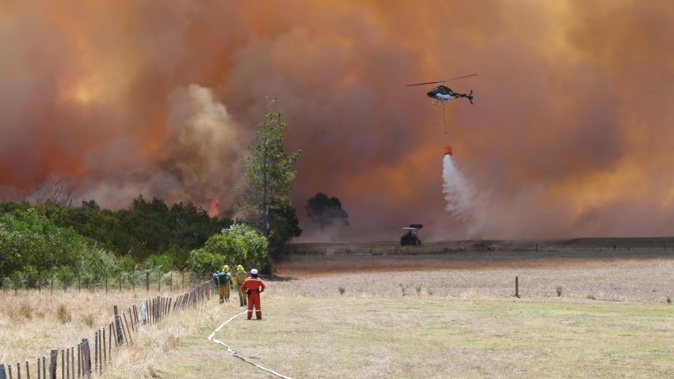
Houston, we have a problem!
United States space agency Nasa has landed to look into the Far North’s issues with drought and wildfire.
Crown Research Institute Scion and Nasa are to collaborate to investigate wildfire risks and water flows on the Aupōuri Peninsula from space.
Scion researchers have secured government support to work with Nasa research centres to observe and learn from how water flows through forests, and to investigate wildfire and drought risks from space.
The Scion teams are among 12 from nine research institutes, each funded up to $75,000 from the Government’s catalyst fund for six-month Earth observation feasibility studies, it was announced recently.
Scion’s research projects, which started on April 1, will explore water use as well as wildfire and drought risks alongside two National Aeronautics and Space Administration research centres.
Collaborating will give the teams access to state-of-the art technology and expertise to develop their research and build partnerships with a world leader in space research and ultimately help with solutions to climate change-driven challenges.
The water-use study will build on results from Scion’s Ministry of Business, Innovation and Employment-funded forest flows programme, which has researched forest hydrology in study sites around New Zealand.
One of the study sites, an 1800ha research catchment in Te Hiku Forest on Northland’s Aupōuri Peninsula, will be the focus of the work with Nasa’s Jet Propulsion Laboratory and the University of Massachusetts at Amherst.
The research team will use two Nasa satellite missions to generate forest-scale measurements of surface and soil water, two key components of the forest water cycle.
The Far North has been plagued by drought and wildfires in the past few decades, with climate change predicted to make the events even more common.
A December 2021 blaze, known as the Waiharara fire after a nearby settlement, ripped through 2800ha of a protected wetland on the peninsula, north of Kaitāia, and twice forced the evacuation of about 50 homes at Kaimaumau.
At the time Forest and Bird Northland conservation manager Dean Baigent-Mercer called the fire “a tragedy on a national scale”.
Shana Gross is leading the Scion/Nasa fire and drought research project in the Far North.
Just over 950ha of the wetland is designated a scientific reserve while a further 2312ha is protected as a conservation area. According to the Fire and Emergency New Zealand report, the wildfire would have a lasting environmental effect on some areas.
Several other wildfires have also burned thousands of hectares of scrub in the area, and they can cost millions of dollars to put out. As well, the Far North has suffered through four droughts in the past 12 years.
The satellite missions will be the new Surface Water and Ocean Topography, and the joint Nasa-Isro (Indian Space Research Organisation) Synthetic Aperture Radar. The missions will measure water use and movement from a single tree (small-scale) up to an entire forest (large-scale).
If successful, the research could be applied across the peninsula’s multiple land uses, and even globally across different land uses at different scales, science lead Dean Meason said.
Tangata whenua Te Hiku ō Te Ika Iwi and the local community are concerned about Te Hiku Forest, planted with radiata pine, and its potential impact on the amount of water in streams and dune lakes, Meason, who is based in Scion’s Rotorua head office, said.
“Alongside showcasing New Zealand research, this provides the opportunity to answer these pressing local concerns about water use and availability and increase understanding of water use and water flow to waterways throughout Te Hiku Forest.”
Accurate data on the moisture content within living vegetation, known as fuel moisture, can provide information on how fire could spread through vegetation and identify areas where drought-stressed vegetation is at risk from insects and disease.
“This work will provide the initial resources needed to build long-term capability and develop new research ideas and direction for wildfire and drought-risk management both in New Zealand and internationally,” Scion fire ecologist and science lead Shana Gross said.
While scientists have been using remote sensing to evaluate fuel characteristics since the 1980s, rapid improvements in satellite technology provide new opportunities to explore complex problems.
Historically fuel moisture has been evaluated in isolation without up-to-date spatial characterisation of the fuel type. This limits the accuracy of current fire prediction tools.
By combining fuel moisture with information on fuel type, the work could lead to more accurate wildfire predictions, improving warning systems, and reducing economic and environmental loss due to wildfire and drought.
This article was originally published on the NZ Herald here.
Take your Radio, Podcasts and Music with you









